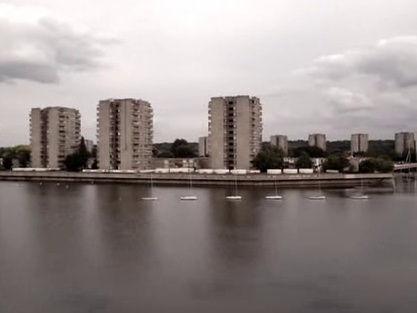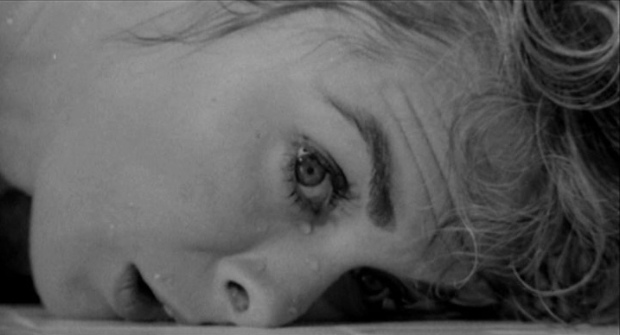 |
Thamesmead, Location of "Misfits". |
I have included a shot of the lift and a clip of how we may use this to build tension and leave a shocking cliffhanger. We thought the idea of the foot stopping the lift door from closing would be a good way to end our thriller, this idea was inspired by the surroundings we visited. However, after exploring other aspects and ideas we may adapt this thought.
 |
| Body's laid out on the street, still from "Once Upon A Time In America" |
These shots and the clip I have added highlight another idea we had for a scene in our thriller, which was also thought of when exploring the car park. We had the idea that the shattered window could be in focus and then just before either the white van or person walk past, the focus shifts towards them instead. This could give the feeling that someone is watching either one of them when they are entering the desolate car park.
Influences on the idea of a car park:
One of the major influences on our choice of this location is the music video to "Angel" by Massive Attack, the empty, desolate car park, noir lighting, glistening streets and enclosed environment posed as a great setting. Therefore, we investigated into which particular car park in Norwich best replicated the one used in the video and we concluded at Anglia Square.



















































